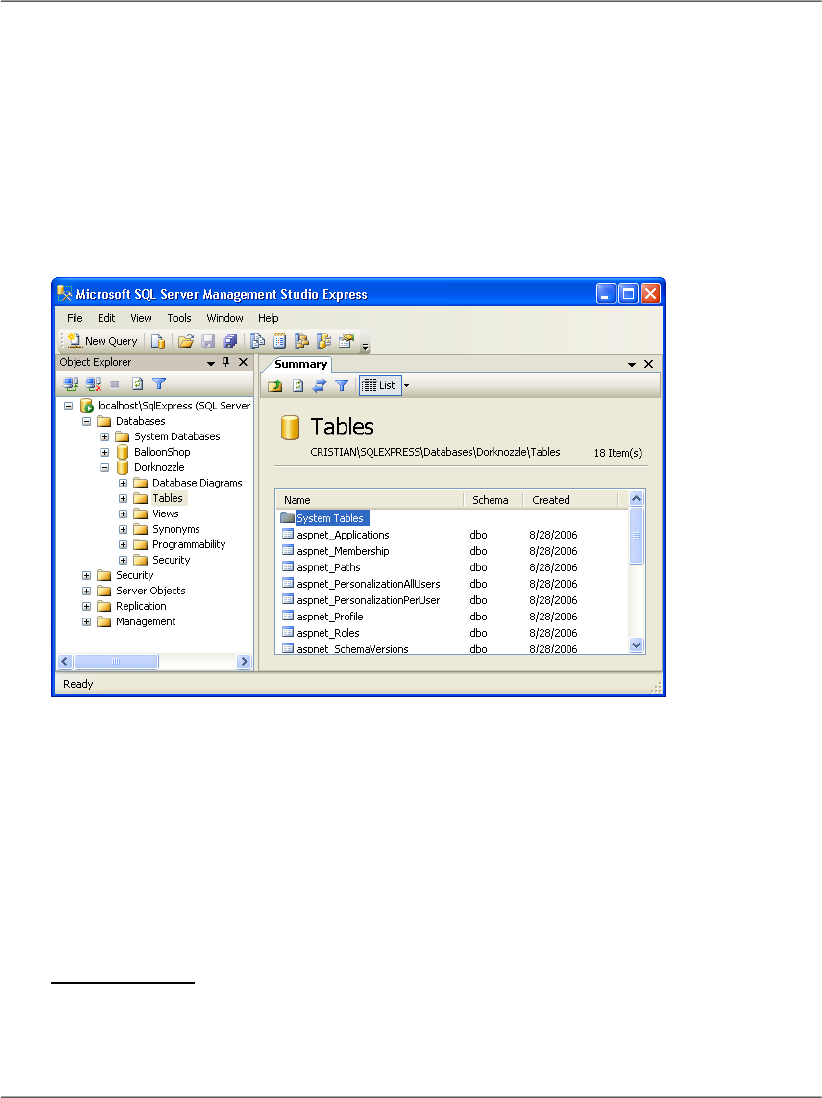
Before you start to add users and roles, it’s worth taking a look around. While
you’re viewing the Security tab, click the Select authentication type link. You’ll see
two options:
From the Internet
You would normally have to select this option to enable forms authentication,
but since you have already selected that type of authentication by editing
your application’s Web.config file, you’ll find this option is already selected.
However, in future, you might want to use this tool to set your preferred
authentication type, instead of editing the file manually.
From a local network
Had we not specified forms authentication in the Web.config file, this option,
which selects Windows authentication—ASP.NET’s default—would have
been selected instead. If you were to re-select this option at this stage, the
tool would remove the <authentication> tag from your Web.config file,
restoring the default setting.
Leave the From the Internet option selected, and click Done to return to the Security
tab.
The Provider tab allows you to change the data provider that’s used to store the
security data. Currently, you can only choose AspNetSqlProvider, which uses
SQL Server to store the membership data.
5
The Application tab shown in Figure 13.10 lets you create and manage application
settings in the form of name-value pairs that will be stored in the Web.config
file. For example, you might want to add a setting named AdminEmail that con-
tained an email address that could be used by your application to send important
administration messages.
We’ve already learned to use Web.config to store connection strings within a
dedicated <connectionStrings> tag. Similarly, ASP.NET supports an <appSet-
tings> tag in the same file for the purpose of storing general application settings.
If you click Save, the administration tool will store the setting in your application’s
Web.config file:
<configuration
xmlns="http://schemas.microsoft.com/.NetConfiguration/v2.0">
5
Pre-release versions of ASP.NET 2.0 also supported the use of Access databases, but that feature
was later replaced with support for the ASPNETDB disconnected database.
553
Using the ASP.NET Web Site Configuration Tool





